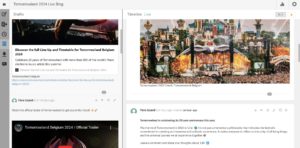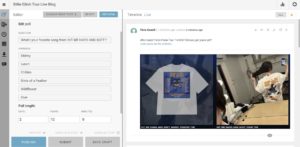By Flora Szandi | July 16, 2024
In today’s rapidly evolving digital landscape, staying ahead of the competition requires not only high-quality content but also real-time engagement with your audience. As newspapers shift to digital platforms, search engine optimisation (SEO) is increasingly important for visibility and reach.
Live blogs are powerful tools to improve SEO and, by extension, website rankings. In this post, we will discuss how live blogging software can positively impact your website’s ranking.
Increased Engagement and Longer Session Durations
Using a live blogging platform can significantly improve user engagement by providing real-time updates that keep visitors coming back for more. High page views and longer time per view during live coverage indicate that users are turning to the blog for immediate updates, suggesting its relevance and authority on the topic. This signals valuable content to search engines, thereby improving the live blog’s ranking in search results.
Fresh and Relevant Content
Search engines prioritise websites that consistently offer up-to-date, frequent and relevant content. A live blogging tool allows you to update your page, and consequently your website regularly, which can result in more frequent indexing by search engines and improved rankings.
Improved Keyword Relevance
During live blogging, you can naturally incorporate relevant keywords and trending topics related to the event. This practice can improve your content’s relevance for specific searches, making it easier for your target audience to find your site.



